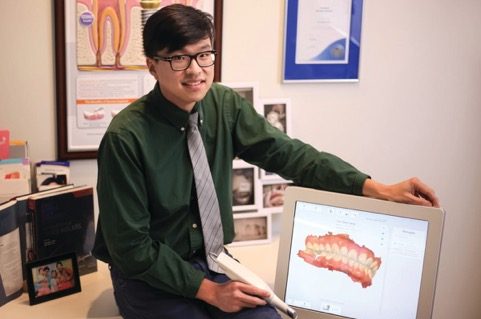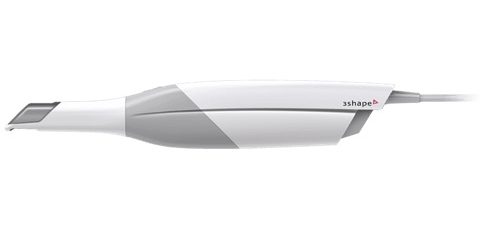 Dr Park shares his knowledge and experience in digital dentistry with an intraoral scanner, sleep dentistry and digitally guided dental implants.
Dr Park shares his knowledge and experience in digital dentistry with an intraoral scanner, sleep dentistry and digitally guided dental implants.
Dr Scott Park at Preventive Dentistry in Canberra is a digital dentistry convert. After practising for 11 years as a senior dentist, he embraces the practice’s philosophy for establishing optimal oral health through providing quality care and preventive measures for the entire family.
Dr Park shares his knowledge and experience in digital dentistry, sleep dentistry and digitally guided implantology through various seminars and enjoys meeting colleagues and helping them to grow. Outside of dentistry, he enjoys life with his wife and three energetic daughters. We asked him about his digital dentistry journey and how an intraoral scanner has helped.
Dr Park, why did you go digital?
The question shouldn’t be why, it should be why wouldn’t you? Like pretty much every other industry, digitalisation is an evident trend for its accuracy and efficiency. Digital dentistry is inevitable in my opinion and it’s the future as well.
With this belief, I’d rather jump in sooner rather than later. This affords me sufficient time to feel familiarisation with the advancing technology and also significantly reduces the learning curve in comparison to getting involved later. Throughout this interview, I hope to share my experience on how digital dentistry has improved my workflows, patient care and treatment outcomes.
Why did you choose 3shape Trios intraoral scanner? What criteria did you use?
Digital dentistry begins with digitalisation of information. Hence, clinically, it begins with an intraoral scanner. The key factors considered were accuracy, efficiency and future updates. Based on my research and careful consideration, 3shape Trios intraoral scanner ticked all of the boxes.
How long have you been using the 3shape Trios intraoral scanner?
Preventive dentistry now has two Trios intraoral scanner units for the three operatory rooms: the first purchased in November 2016 and the subsequent purchase happened in December 2017. With the increasing love and dependency of our dentists, one Trios intraoral scanner isn’t enough – we have ended up with two!
Which indications do you use the 3shape Trios intraoral scanner for?
It’s probably quicker to tell you what we don’t use the Trios intraoral scanner for. In our practice, Trios is used for everything that our laboratories can digitally manufacture – mouthguards, clear removable orthodontics, anti-bruxism splints, anti-sleep apnoea devices, simple and complex fixed prosthodontics and dental implants. The Trios intraoral scanner has significantly increased efficiency, productivity and accuracy. Why wouldn’t you use it for everything? That would be my question.
Reduced possibility of impression taking errors and elimination of material inaccuracies mean fewer or almost no restoration mistakes. The intraoral scanning time will reduce considerably with more frequent use and is well-under two minutes for me for scanning both arches. For simple prosthodontics with partial arch scanning, it’s even quicker. Dentistry without a Trios intraoral scanner is unimaginable now at Preventive Dentistry!

How has going digital benefited your business and your implant work?
As I said, the Trios intraoral scanner has significantly increased efficiency, productivity, and accuracy. This means increased revenue, time savings and reduced work stress. We could even look at same day implants and prosthodontics if we wish.
The Trios intraoral scanner and 3shape Implant Studio allow prosthodontic-driven dental implants, which is definitely the next level for both dentists and patients. More accurate, safer and comfortable implant placement is all possible with the digital workflow. Digitally-guided implantology also allows you to broaden your scope and ability to tackle complex cases with increased confidence, consistency and predictability.
When considering going digital, doctors often look at their spend on impression materials and the cost of the intraoral scanner. Do you think this is the right approach?
Well, we bought two Trios intraoral scanning units for a very good reason and in our calculation, it pays itself off!
So, first up, reducing restoration inaccuracy and chair time, saving material and laboratory fees, increased patient comfort and enhanced patient appreciation. These are the benefits that more than offset the initial investment in the Trios.
It saves me chair time compared to conventional PVS impression taking. It saves materials – I think it worked out to be somewhere between $25 – $30 per sitting for our old one; now I don’t have to spend any money on impression materials.
It offers a simplified workflow – no messy pour-up so this means it doesn’t take up anyone’s time and also my technician will be able to reduce his lab bill because the workflow is a lot simpler than it used to be.
And then scanning takes significantly less time than a PVS impression. The more scans you do, the quicker you become. You can never gain that exponential efficiency no matter how skilled you are at a PVS impression; conversely, I really enjoy racing against myself anyway for faster scans. I’m sure all our colleagues do too. For the patient, it’s especially good because there is no distasteful impression material that often makes patients gag. For those with a sensitive gag reflex, they will love you for using the Trios 3 intraoral scanner for digital impressions. And it’s more comfortable for patients with an over-sized thyroid.
Has it been a good investment for Preventive Dentistry?
With the accurate data collection and the ability to pre-plan, you can manage more complex cases with confidence and greater predictability. You don’t have to do everything, but Trios can help you to go further if you wish. And all those factors really compensate for the initial investment in the intraoral scanners. I believe we have paid both scanners off a few times over now.
How have patients responded to 3shape Trios 3 in your practice?
Having technology doesn’t necessarily make you a good dentist. But good dentistry assisted by technology is awesome. Patients know that too. Furthermore, the Trios 3 intraoral scanner with HD display really helps them to see what you and Trios are capable of. After the scan, I often take time to go through their scans and so it is also a great education tool as well as your treatment presentation right there. Since I have had my Trios, the Trios certainly has improved my patients’ understanding and also case acceptance.
How do you see the future of digital dentistry?
As I often tell all my colleagues, it is here and now! I hope sharing my journey encourages my colleagues to adopt digital dentistry as it is revolutionising how we do dentistry! It is for the better. And it is better for patients too.
I hope all of the profession who have been thinking about it jump in now, as it is not going to go away. Jump in now, get involved and we will all grow together. That is my hope and the reason why I’ve done this interview today.
For more info contact 3shape at [email protected] or call 01189 151 300.


